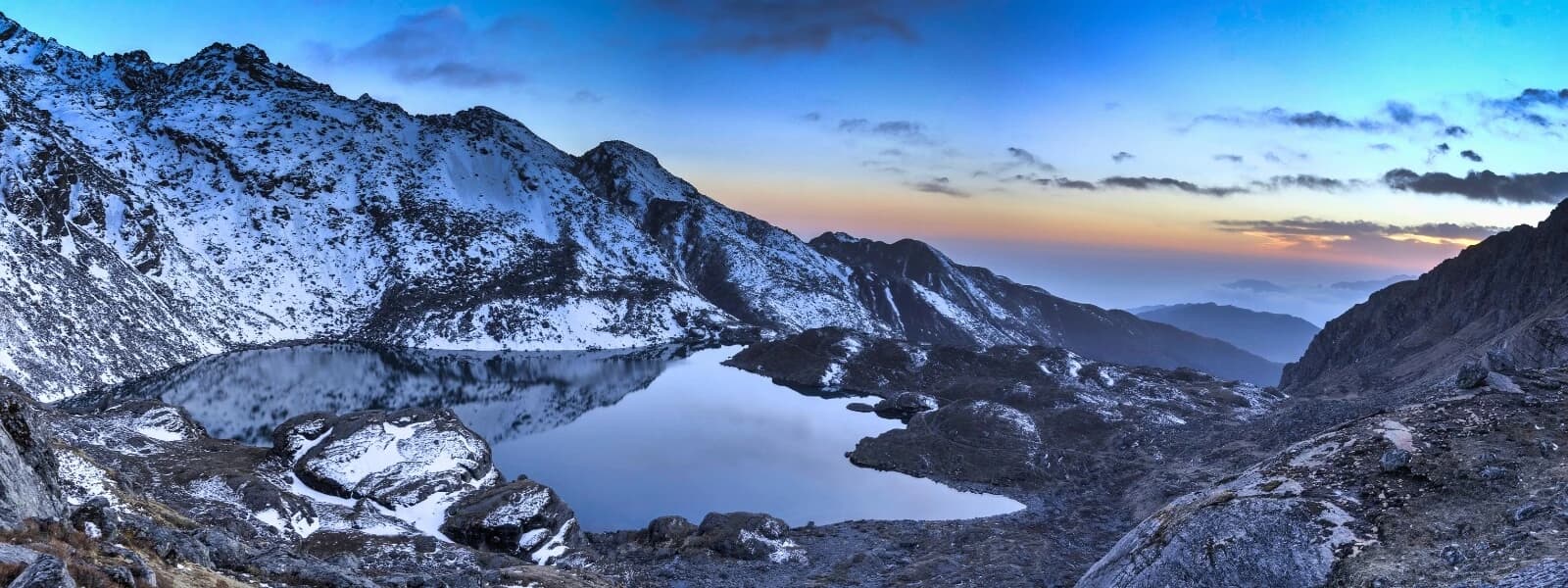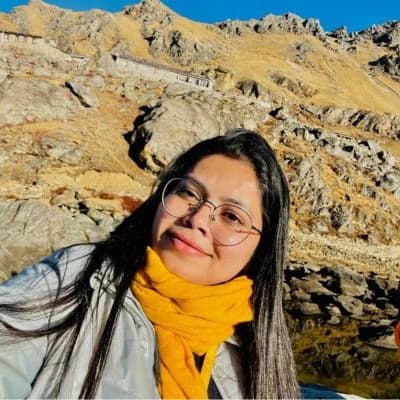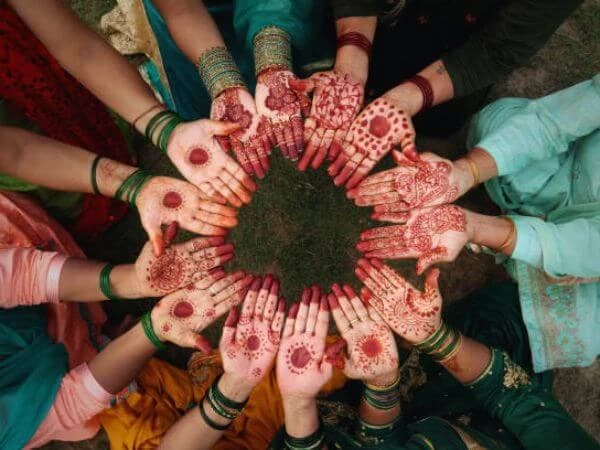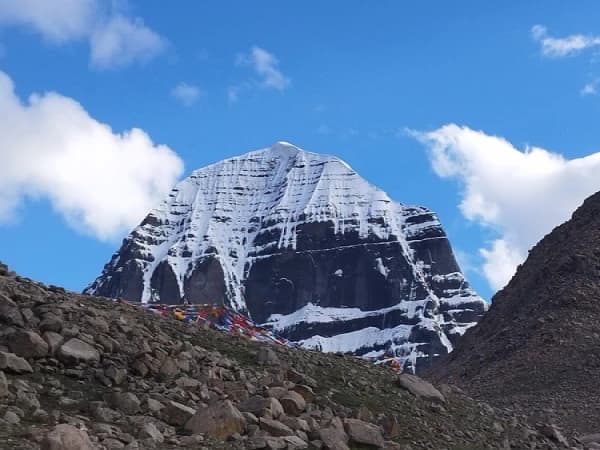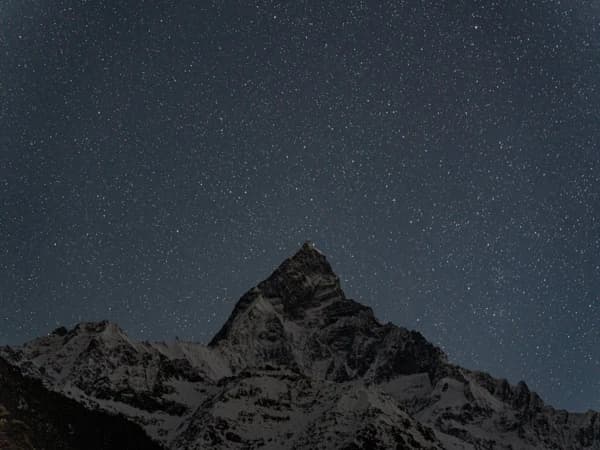Langtang Valley is situated in the North of Kathmandu and is the nearest Himalayan region from Kathmandu rewarding you with mighty views of the Himalayas i.e. Langtang Lirung (7246m), Ganesh Himal(7422m), Langshisha Ri(7245m), Yala Peak, Dorje Lakpa(6989m), etc. Then accompanies diverse flora and fauna inhabiting this valley along with warm-hearted Sherpas and Tamangs.
A Complete Guide to Langtang Gosainkunda Trek
A Guide to Nepal’s Glacier Valley: Langtang Gosaikunda trek
A paradise for mountain lovers and a gateway to spiritual seekers, the Langtang valley “ Valley of Glaciers” and Gosaikunda ( Pristine Lake) trek is the most cherished trek. On one hand, this trek shows the biological diversity of Nepal whereas on the other it is one of the best examples of unity in diversity as there is an amalgamation of Buddhist and Hindu spiritual beliefs. Thus making the trek suitable for people from all walks of life.

Langtang Valley is situated in the North of Kathmandu and is the nearest Himalayan region from Kathmandu rewarding you with mighty views of the Himalayas i.e. Langtang Lirung (7246m), Ganesh Himal(7422m), Langshisha Ri(7245m), Yala Peak, Dorje Lakpa(6989m), etc. Then accompanies diverse flora and fauna inhabiting this valley along with warm-hearted Sherpas and Tamangs.
Now, you might wonder “What would be the level of difficulty to reach such a destination that rewards you with jaw-dropping sceneries?” To clear your distress, this trek can be undertaken by beginners as well if they are willing to.
Langtang Gosaikunda Trek With Kathmandu City Tour
The journey begins with the Kathmandu city tour (Durbar square, Bouddha, Pashupati, Swayambhu) that enlightens you about the brief history of how the entire city and temple complexes were established.
From Kathmandu, enjoy a scenic drive through the mountainous landscape to Syabru Besi. The hike officially starts from Syabru Besi through luscious bamboo and rhododendron forest along with the burbling Langtang Khola river that entices you to its source. The Langtang Valley is reminiscent of the earthquake back in 2015 and has only recently recovered with full throttle to tourism.
As you approach higher altitudes, diverse vegetation and topography can be encountered. Yaks grazing in the alpine pastureland, mountain boulders, and snow-fed rivers welcome you to the ancient Kyanjin Gompa. This place can be regarded as the open-air museum that preserves one of the most sacred Buddhist relics, monasteries, mani walls, fluttering prayer flags, and mani wheels. Also, bless your taste bud with the local specialty ‘yak cheese’ from the cheese factory.
Accent to Kyanjin Ri offers a 360 view of Himalayan ranges whereas descent to Gosaikunda via Lauribina quenches your spiritual thirst. The holy lakes not only provide you with serenity but dazzle you with their pure beauty. The trek finally ends via Chisapani & Sundarijal route to Kathmandu.
Trip Facts :
Before you start your journey, it is best to address yourself with basic information regarding the entire journey. Some of the trip facts have been mentioned below:
|
Destination |
Nepal |
|
Starting point |
Kathmandu |
|
Ending point |
Kathmandu |
|
Max Altitude |
4985 meters (Tsergo Ri) |
|
Difficulty |
Easy-Moderate |
|
Best season |
March-June & Sept-Nov |
|
Accommodation |
Tea House/ Lodge |
|
Tour route |
Kathmandu- Syabrubesi- Lama Hotel- Mundu via Langtang village- Kyanjin Gompa- Tsergo Ri- Descent to Kyanjin Gompa- Lama Hotel- Thulo Sarbu- Lauribina- Gosaikunda- Ghopte- Mangengoth- Gul Bhanjyang- Chisapani- Sundarijal- Kathmandu |
Trek Highlights:
Now that you are well known about trip facts why not add a little bit of spice to the trip and jump to its highlights. They are:
- Visit UNESCO heritage sites inside Kathmandu Valley
- 360-degree view of Himalayan ranges.
- Get to taste local cuisine and yak cheese that energize you throughout the trip.
- Experience warm hospitality from native inhabitants and practice acculturation.
- Visit the deepest lake of Nepal with religious significance and myth, Gosaikunda, believed to be created by Lord Shiva.
- Witness rare flora, fauna, and natural vegetation in the national park.
- Short hiking options i.e Sundarijal and Chisapani while returning to Kathmandu.
- Ancient Monasteries, Mani walls, engraved sacred mantras of Kyanjin Gompa.
- Hot springs on the way to Langtang Valley that revitalize you.
Langtang Gosaikunda Trek Difficulty:
Langtang Gosaikunda trek levels range from easy-moderate and suitable for beginners as well who are enthusiastic to travel. Being said that, difficulties might arise due to various external factors such as climate, altitude, means, modes of transportation, altitude, and so on.
Increase in altitude results in unpredictable weather and altitude sickness. So, you must make sure to bring the right sorts of clothing and drink plenty of water while ascending. If the symptoms of altitude sickness occur, take the Diamox pill and decrease your walking pace.
This trek can be enjoyed the most during spring and autumn. Rhododendron patches and Lush green terrain await you during this auspicious time. Avoid the summer as the rain could make the terrains soggy and slippery, making your trek more challenging. Not to forget your travel mates, leeches, and earthworms!! However, winter can also be equally challenging due to the harsh cold.
To minimize difficulties, ensure that you are equipped with proper trekking gear, physically fit, and mentally strong.
What would be the best time or season to visit Langtang?
March to June (Spring) and Sept to Nov (Autumn) can be considered the best time to undertake this trip.
The beginning of the spring adds color to the Langtang Valley with colorful rhododendrons, jasmine and wildflowers, and mustard fields. The mild temperature varying between 12-20 degrees C with no rain and snow gives you the best experience of the trek. This is also the best time to encounter rare red pandas and snow leopards. If not, visit a national park where there are diverse species of musk deer, falcons, deers, etc.
Autumn in the Langtang region is marked by warm and clear weather with a perfect view of snow-capped mountains under a clear blue sky.
What kind of accommodation service you could expect?
Generally, a well-hospitable tea house or lodge is the accommodation that you have to rely upon in the Langtang region. The services and facilities may differ as per the altitude level and remoteness of the region, but stay assured regarding your basic needs. Delicious meals, and comfortable and clean rooms with warm hospitality are provided in most of the lodges.
Additional needs such as wifi, hot shower and sometimes electricity may not be available in higher regions due to the remoteness or you might have to pay extra for it if available. So you may be a bit disappointed due to the lack of standard service. The trek might allow you to stick to the basic facilities and be grateful for them.
What sorts of meals will you be offered during the trek?
The tea house and lodges offer you three meals ( breakfast, lunch, and dinner) with a multiple-choice menu ranging from western cuisine to Nepali cuisine. You’ll have the option of different drinks to stimulate yourself and snacks to munch on by paying an additional amount. The courses might differ and choices may lessen as you reach the rural areas.
For breakfast, you will be served bread, chapati, pancake, egg, soup, and so on by 7-9 pm whereas lunch offers multiple carbs-rich courses such as pizza, momo, Dal Bhat, noodles, etc. Last but not least, dinner is usually freshly served meals that refill and encourages you to continue your journey.
As there is a popular saying among trekkers in Nepal, “Dal Bhat power, 24 hours” this trek won’t be complete unless you opt for Dal Bhat over other courses. The meal set is cheap and you can rest assured to have an energetic trip ahead without any discomfort or ailment. This can be your only support for meals as you hit the altitude because of lack of transportation.
What are the festivals you could celebrate?
Nepal is a country where more gods and goddesses reside than the people. Later, the diversity in caste and religion further added to this never-ending list and as a result, Nepal celebrates festivals and rituals almost every day. Especially if you visit during Aug- Nov you will be aw-struck by the hype and crowd of jatras and festivals in the capital city of Kathmandu.

The Langtang and Gosaikunda don't have more to offer in terms of festivals but the trek itself highlights the religious significance of both Hindu and Buddhist religions. If you visit these places on an auspicious occasion you’ll get to imbibe enormous energy due to different ancient and powerful shamanic rituals performed in the Kunda.
Some of the festivals celebrated are :
|
Festivals |
Religion |
Months Celebrated |
|
Sonam Lhosar |
Buddhism (Tamang) |
February |
|
Janai Purnima |
Hinduism |
August |
Required Trekking Equipments :
The proper trekking gear is the key to a successful and euphoric hike. No matter what kind of difficulties you face, if you are equipped with the proper kind of trekking equipment, you can mitigate it to some extent.
No doubt this trek is suitable for beginners, but the wilderness of this remote paradise may test the patience of anyone. So, it is best to stay prepared for any kind of circumstances.
The list of trekking gears are:
- Clothing: Warm jacket, water, and windproof jacket, long sleeve synthetic fleece, thermal underwear, gloves and scarf, hiking trousers, warm wool blend socks, running socks or line socks, proper hiking/ trekking boots, 2-3 t-shirts, etc.
- Trekking Gear: Polarizing sunglasses, back-pack & cover, map of the trekking area, head torch or small torch, water bottles with purification tablets, lip guard, sunblock cream, toiletry kit, hand wash/ sanitizer, first aid kit, earplugs, a small lightweight quick-drying towel, some Diamox pills against altitude sickness, etc.
- Optional items: Camera, Battery, Altimeter, compass, binoculars, trekking poles, pocket knife, candles, GPS unit, book/magazines, etc.
Types of Trekking Permits Needed
TIMS card is compulsory for trekkers visiting the Langtang region as the checkpoint is at the starting point of the trek Syabru Besi. You can obtain the card from NTB and TAAN in both Kathmandu and Pokhara.
Since you trek via Langtang National Park, you need to get the Langtang National Park Permit. You can obtain it from the NTB in Kathmandu or the entry point at Dhunche. It costs $15 for citizens of SAARC countries and $30 for others.
How can you reach there and the duration required to reach there?
Your hike to Langtang officially starts from Syabru Besi (80 km from Ktm) where you can reach by taking the public bus, jeep, or private drive. If you are the one who wants to observe the hustle and bustle of the city and local people, you can board the bus at 7-9 a.m from Maccha Pokhari. You can even opt for solidarity with scenes by taking a private jeep or bike. Within 7-8 hrs of drive, you can reach there.
The 7-8 hrs hike to Lama Hotel via Syabru Besi (11 km) takes you through the bamboo forest to wide upper valleys with pasture lands and meadows. Gradually, you can reach Kyanjin Gompa (3817m above sea level) via Langtang Valley by walking for 3-4 hrs.
What types of flora and fauna you’ll get to see?
Langtang National Park is the home to diverse flora and fauna that enriches its ecology. The trek, therefore dazzles you with lowland subtropical bamboo tall trees, colorful rhododendron to subalpine vegetations such as silver-fir, hemlock, etc.
There are 46 species of mammals including rare species like snow leopard, red panda, musk deer, Himalayan Thar, etc. 70 species of butterflies and 345 species of birds add color to the portrait of lush vegetation and makes your trek delightful.
What are the special features of local inhabitants?
The local inhabitants of the Langtang region are of Sherpa, Tamang, and Bhotia origin. As the valley treasures ancient monasteries, Buddhist relics, mani walls, people here practice Buddhist Bon-Po culture. The spiritual people closely connected with the valley offer you the best hospitality you’ve ever experienced.
Feel free to interact with the people and inhabit their lifestyles. Acculturation is the best possible way to learn about the specific place which you’ll be doing during this trek. If you are willing, participate in local farming and invest your time in the rural lifestyle.
Conclusion :
Langtang and Gosaikunda trek is the best alternative for ABC or EBC trek. Experience the wilderness in the lap of the Himalayas, traverse through the forests and crackling streams, enhance your social horizon by interacting with locals, and come across the most diverse ecological reserve.

This holiday, why not avoid the tourist circuit and opt for a more approachable, serene, peaceful trek to Langtang and Gosaikunda. The trekkers in many ways contribute towards the development of the region by paying their visit. The overall economic and socio-cultural environment may get transformed through trekking. So, let's not wait! Pack your bags and hurry to the mountains. The Himalayas are calling you!!


